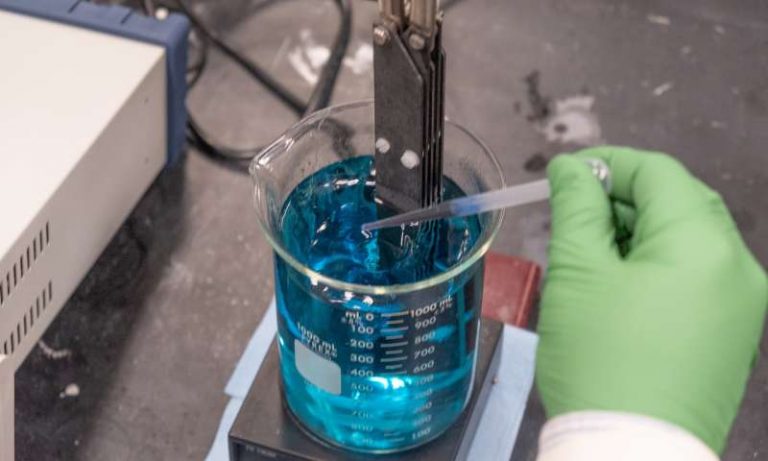Michigan eyes toughest limits for some PFAS in drinking water
By Garret Ellison | MLive | June 25, 2019

Read the full article by Garret Ellison (MLive)
“LANSING, MI — Michigan could have some of the nation’s toughest drinking water limits for toxic fluorochemicals called PFAS if goals proposed by a state scientific workgroup survive the environmental rulemaking process unchanged and become law.
On Thursday, June 27, the Michigan PFAS Action Response Team (MPART) received ‘health-based values’ for seven separate PFAS compounds from an advisory panel tasked with recommending regulatory limits for the chemicals in public water supplies.
Proposed numbers would be the lowest in the nation for the chemicals PFNA and PFOA, two of many different PFAS compounds testing has found in Michigan drinking water.
However, the numbers are not final and may change as regulators get input about their feasibility from utilities, local governments, industry and other stakeholders. Once finalized, public supply operators would be required to comply with the limits, called maximum contaminant levels, or MCLs, under the Safe Drinking Water Act.
The state plans to issue final draft numbers in October and hopes to have enforceable standards in place by late spring 2020.
‘We don’t know where those will ultimately end up, but these are the starting point,’ said Steve Sliver, director of MPART, which is housed within the state Department of Environment, Great Lakes and Energy (EGLE, formerly DEQ). ‘If all goes well, we could have a set of enforceable standards for drinking water this time next year.’
The proposed numbers are (in parts-per-trillion, or ppt):
- PFNA: 6-ppt
- PFOA: 8-ppt
- PFOS: 16-ppt
- PFHxS: 51-ppt
- GenX: 370-ppt
- PFBS: 420-ppt
- PFHxA: 400,000-ppt
The workgroup was led by David Savitz, an epidemiology professor at Brown University. The other two members are Kevin Cox, managing toxicologist at the NSF International, and East Carolina University research professor Jamie DeWitt.
The team’s work was ordered by Gov. Gretchen Whitmer in March, who said the state can’t wait for the U.S. Environmental Protection Agency to develop national standards.
Upset that the federal government is moving slowly on the issue, states like Michigan, New York, New Hampshire and Pennsylvania have begun developing their own PFAS standards.
The EPA does not have enforceable standards for PFAS in public water supplies or at toxic cleanup sites. The agency has an unenforceable advisory level of 70-ppt for PFOS and PFOA that’s been criticized by some states and independent scientists as inadequate.
New Jersey presently has the nation’s only state-level MCL for PFAS, a 13-ppt limit for PFNA. Similarly low standards for PFOA and PFOS are pending. New York is considering a 10-ppt limit for both PFOA and PFOS combined. Vermont has an advisory for a combination of five specific compounds at 20-ppt and plans to propose an MCL at that level.
Cox presented the workgroup numbers to MPART and the state’s Environmental Rules Review Committee (ERRC) on Thursday. He said the team’s recommendations are based, in part, on new PFAS screening levels issued by the Michigan Department of Health and Human Services. Those were based on guidance from the Agency for Toxic Substances and Disease Registry (ATSDR), the toxicology arm of the U.S. Centers for Disease Control and Prevention.
The workgroup also looked at a study released this year by health authorities in Minnesota, who evaluated the impact of PFAS exposure to infants and unborn children.
The team evaluated 18 different compounds commonly found in statewide public water testing done last year and “focused on those PFAS that they determined had enough peer reviewed studies on which to base their conclusions,” according to the workgroup report.
Variation between the numbers for, say PFNA and PFHxA, is due to the number of carbon atoms in each molecule. Compounds with more carbon atoms — so called ‘long chain’ PFAS chemicals — bioaccumulate more easily and remain in the body longer.
In humans, long-chain PFAS compounds remain in the body much longer than they do in lab animals like rats, which complicates toxicology study. Converting dosage measurements from animals to humans ‘really drives these assessments into the low ppt range,’ Cox said.
The workgroup noted that other long-chain compounds found in Michigan water like PFDA, PFDoA, PFTA, PFTrDA, PFUnA, NEtFOSAA and NMeFOSAA don’t yet have enough study to develop recommendations, but ‘would be expected to produce similar health effects’ as other similar compounds. ‘Additional monitoring, research for potential sources, notification of the public, and efforts to reduce exposure are warranted,’ the group wrote…
The state has been evaluating treatment options like reverse osmosis, granular activated carbon and anion exchange that could remove PFAS down to target levels.
Activated carbon filtration installed at the Plainfield Townhip and Ann Arbor water plants has been shown to ably remove most PFAS compounds, but can let some through.
Once draft rules are submitted in October, public hearings will follow.
The state’s environmental rules oversight panel, the ERRC, will also weigh-in on the proposed numbers. The controversial panel installed under former Gov. Rick Snyder was one of two such industry-heavy oversight boards that Gov. Whitmer tried to abolish this year. However, her order was overturned by a Republican majority in the state legislature.”
This content provided by the PFAS Project.
Location:
Topics: